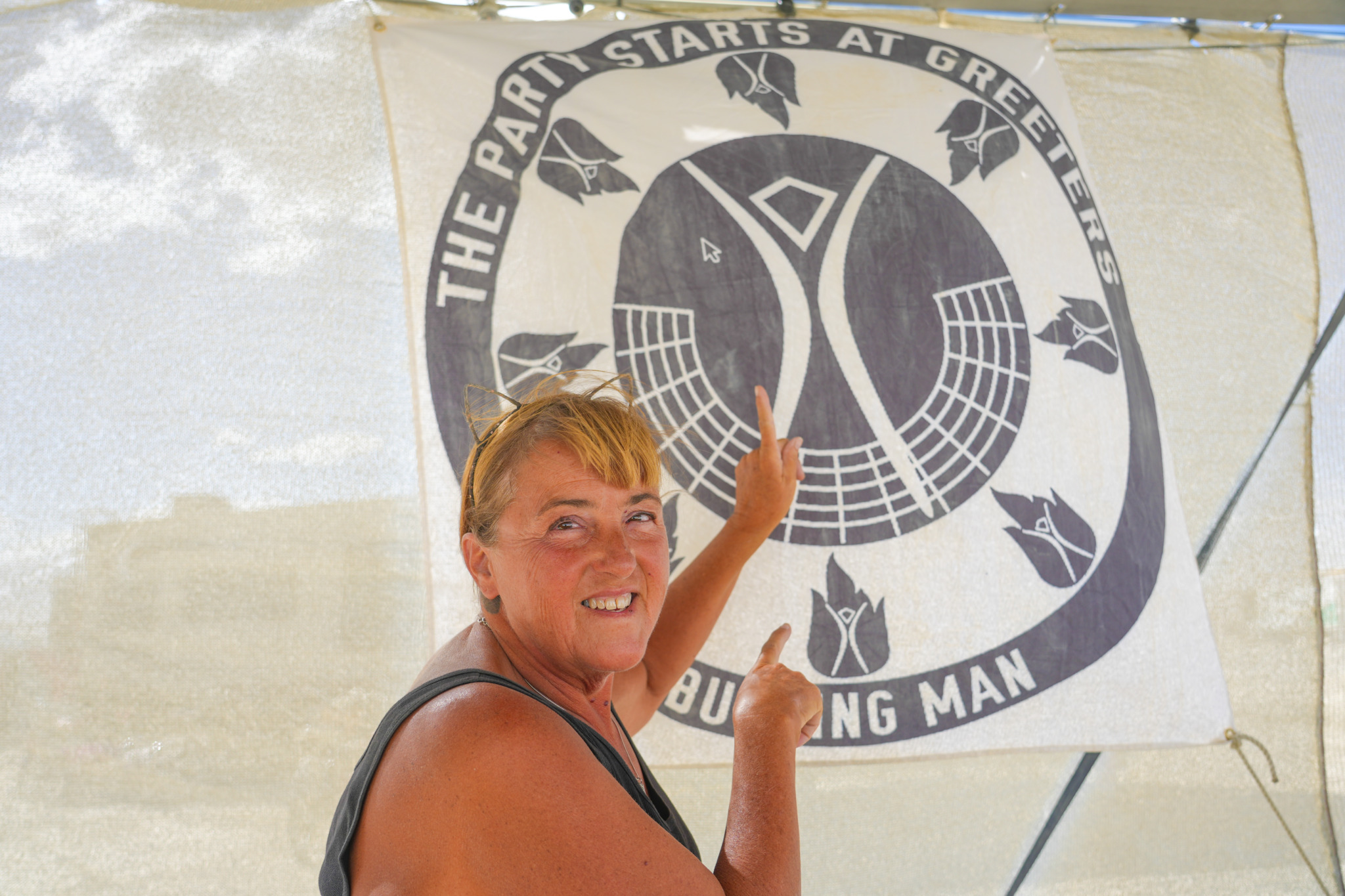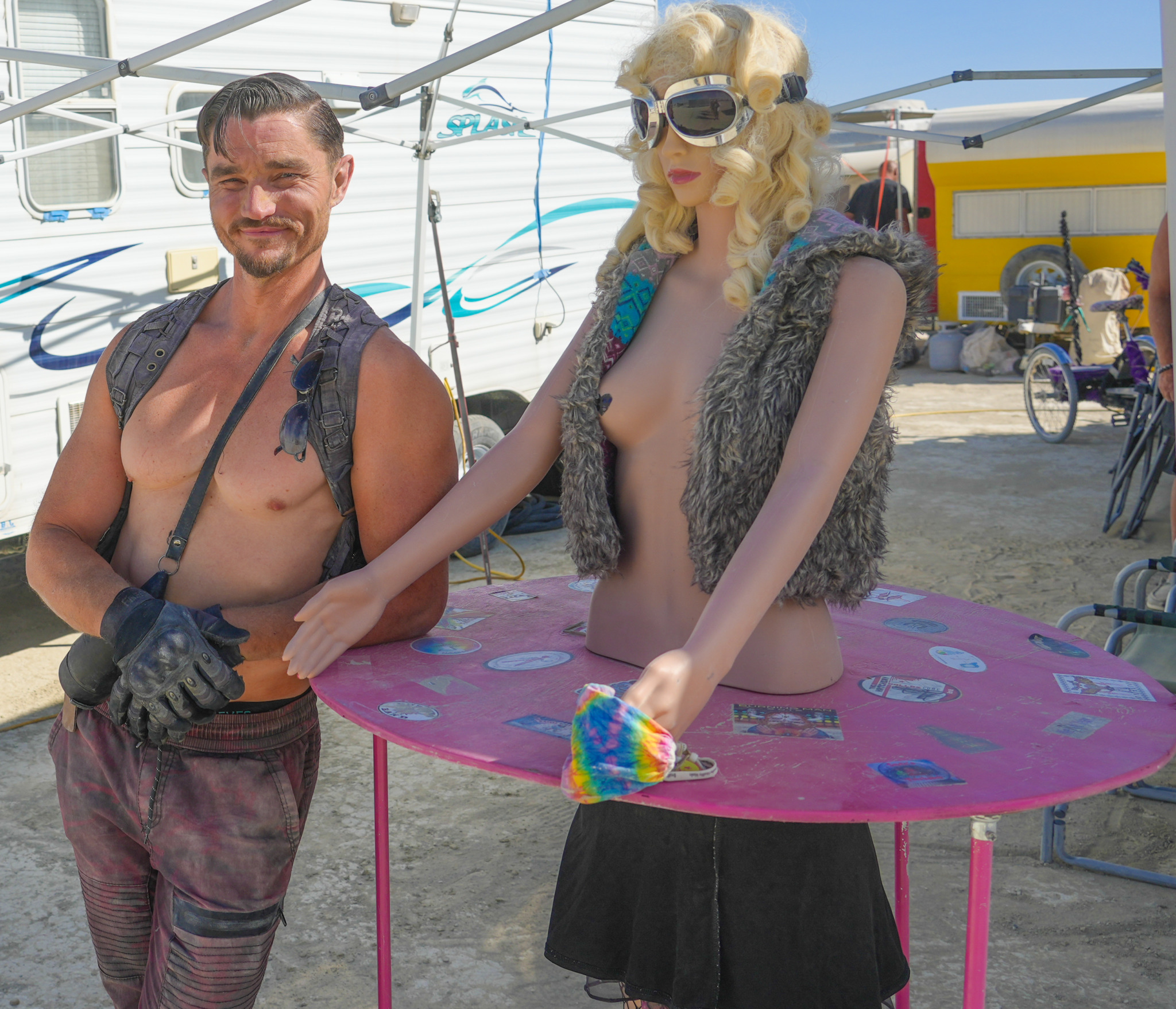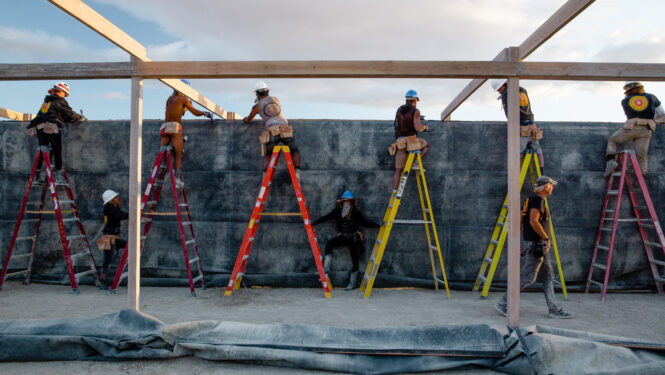“We know that every person has value and their contributions are a gift. We honor that. It is the spirit and positive intention of every person who contributed or will contribute that makes Burning Man.”
– Harley K. Dubois, Burning Man Project Co-founder and Chief Culture Officer
Burning Man comes to life through participation. Giving one’s time, skills and resources is a touchstone for this global cultural movement, everywhere — whether in Black Rock City, or in 30 countries around the world. The impact of what we create together generates ripples that inspire and connect humanity.
More than an event, Burning Man is a global cultural movement. The nonprofit in service to this culture requires year-round support — year after year. Support the Burning Man Project nonprofit’s mission to build a more creative, connected world. Make a tax-deductible donation today.
Every August, thousands of hard-working humans (this year, nearly 70,000 strong) make their way to Northern Nevada to co-create a mighty desert city. They get involved in a myriad of ways — from organizing theme camps and building art, to lending their skills to any number of teams and projects. Similarly, around the world people gift their time and resources to create close to 100 official Burning Man Regional Events and a vast number of creative and community projects. Why do this? Because it feels good to contribute to something that brings a sense of purpose and community.
Whether or not you frolic in the Black Rock Desert, there are oh-so-many ways to get further involved. You can connect with your Regional community, participate in a Burners Without Borders chapter, join a volunteer team helping run Black Rock City, bring art to Black Rock City, build an art car or a theme camp, or start a wildly imaginative and completely unique project with your friends.
In Black Rock City we met up with long-time contributors who help run the city’s infrastructure to ask: Why is it important to participate? And how has helping create Black Rock City had a positive impact on their lives and communities?
(Want MORE? We also produced a Burning Man LIVE podcast episode featuring Deb, Eric, Trevor and others. Listen to “Volunteer Voices” here.)
‘Topless Deb’ Stiers: Greeters
“I want to help people, serve people, show them other places, things they can do.”

We connected with Deb Stiers at Greeters Camp, where she lounged with friends beneath a tidy shade structure. Known on playa as Topless Deb, back in 2002 she arrived at her first burn and immediately started greeting newly-arrived Burners.
“I have volunteered for Greeters since I rolled in the gate. I had no idea what it was. I came in the middle of the night and thought ‘Oh, this looks like fun!’ I parked my car. I pulled out a jacket and I started greeting and I’ve greeted ever since. I like welcoming everyone home. I like that you teach and learn from each other when you greet. It’s not one-sided by any stretch of the imagination.” Deb has been a Greeter in Black Rock City every year since — 21 Burns to date.
Deb brought so much of what she learned in Black Rock City into her life beyond the desert. She served as a Los Angeles Regional Contact for many years and co-founded Bequinox, LA’s official Regional Event, which she continues to co-produce.
Watch Deb and her fellow BEquinox producer speak about LA’s Regional Event in this whimsical video:
“What you learn here is easy for me to take into my normal day-to-day life,” Deb observed. “Leaving No Trace is a big one… Volunteering and doing what you can for others is really important. I crochet voraciously and I share that skill with other people. I’m an accountant by trade. I share that skillset with other people. I want to help people, serve people, show them other places, things they can do… I’m retired. You really can go into the community outside of Burning Man and do things for people when you have the time.”
Eric ‘Fuckyeah’ Hale: Man Pavilion Crew
“I see traces of what Burning Man is to me out in the real world when I see people doing things that they feel excellent at because it drives them.”

Eric Hale, aka Fuckyeah, works on the Man Pavilion as a carpenter. Over the years, he volunteered with various playa teams — including Fence Crew and Arctica. He’s a second-generation Burning Man volunteer; his parents contributed to Greeters and Playa Info.
“What inspired me to first volunteer was actually my parents,” he shared. “They had already been coming to Burning Man for a number of years before I got here. This would have been their 25th year. They’re not here this year unfortunately, for health reasons… They gave me the reason to want to keep doing something, and made me realize [volunteering] gives a sense of purpose and connection.
“I definitely bring what I get here into my default world in the sense that I have learned more about myself as a man and as a person, how I want to be, the values that I have,” he continued. “It’s given me a strong sense of acts of service being a really strong love language and a meaningful way to show care and connection with things that I value and people.”
“I see traces of what Burning Man is to me out in the real world when I see people doing things that they feel excellent at because it drives them… because it is not something that they’re just doing for money, but because they have a want for expression or a community and connection. And when I see that — people doing something in spite of difficulty, it is absolutely this place. This is one of the dumbest places in the world to have a party, and yet here we are,” Eric laughed.
Trevor ‘Ruin’ Tarin: Department of Public Works Shade Crew
“I switched everything around after my first couple years out here… and I started a bunch of small businesses.”

Trevor Tarin, aka Ruin, is assistant manager for the Department of Public Works (DPW) Shade crew. “We come out here and build roughly 120,000 square feet of municipal infrastructure shade… everything that keeps the city cranking.”
Trevor began his Burning Man journey in 2009, living in a tiny camp with no shade. Subsequently he ran a small sound camp with friends, and ultimately joined the DPW. “I decided that my gift to the playa was going to be a little bit more substantial, and it was going to be sweat equity.”
He cites working hard in a DPW crew as his path to self understanding. “When I come out here, the choice is to work really hard with my team, work really hard on myself, and find out what I’m made of. It’s exhilarating. Every year I come away with another pretty big life lesson, and I endeavor to help share that growth pattern with my crew. I find that to be really fulfilling.”
After his first couple years on playa, Trevor switched his life around. “I stopped being an office assistant, and I started a bunch of small businesses — one of which is something I’ve been working on for over 10 years now, a hat company.
“The reason I do the hat thing is because it’s a way I can participate in people’s transformations in this small way. When someone decides that they want to be a new or a different or more authentic version of themselves, sometimes they need to accessorize with something that’s a very unique hat.”
Burning Man changes people in profound ways. But is it changing the world? Beyond how this global cultural movement has impacted their lives and immediate communities, how do they experience the impact of Burning Man in the wider world?
Deb sees change happening one person at a time. “When someone comes to Burning Man, they can’t help but leave this place a different person,” she observed. “I’ve seen people go home and start a brand new business because they’ve discovered that they want to weld or they want to cook for people or whatever it is. Has it changed the world one person at a time? Perhaps? Will it? Hopefully, eventually they’ll all get together and make a difference.”
Trevor points to the awe-inspiring art, which journeys beyond Black Rock City to public spaces around the globe. “It’s undeniable that Burning Man has had a profound impact on not just the local art scene, but on the global art scene. It’s created a new precedent for new kinds of art, especially on large scales. It’s touched millions of people’s lives… I love the gifts that Burning Man has brought to the world. I think that its impact is undeniably positive.”
Burning Man Changes You, and YOU Change the World
Wherever you live, and whatever point you’re at in your Burning Man journey, know this: YOU are a quintessential part of how this playful, inventive, community-minded culture evolves into the future. Whether or not you frolic in the Black Rock Desert, there are oh-so-many ways to contribute to Burning Man. For starters, you can join a project in your Regional community or volunteer to help bring Black Rock City to life.
Ticket sales alone do not support the nonprofit’s year-round work to build Black Rock City and nurture a global cultural movement. The ticket sales shortfall in 2024 has heightened our need for community support to keep going. If you have the means, make a tax-deductible donation to Burning Man project.
Cover image of Volunteers in Black Rock City, 2024 (Photo by Gurps Chawla)


I heard this on the pod cast and enjoyed the stories but felt it overly represented DPW. I am a volunteer nurse with ESD and there is a doctor Marc Nelson who has been volunteering for 22 years. My daughter volunteered with medical and now is helping with the CIT group. The city has so many wonderful volunteers that should also be recognized.
Report comment
Marc is legendary
Report comment
There is a positive aspect to the “sales shortfall”.
Been out there since 2003 and when ticket demand exceeded supply in 2011 that was a pivotal moment. “Radical inclusion” was rendered conditional. “Everyone is welcome” once they managed to get a ticket not everybody did. Quite a few of the long running theme camps ended after that year. So if demand is actually slightly less than supply from here on out, I consider that a good thing. It means people can come back every consecutive year and that contributes to cultural continuity.
Report comment
Comments are closed.